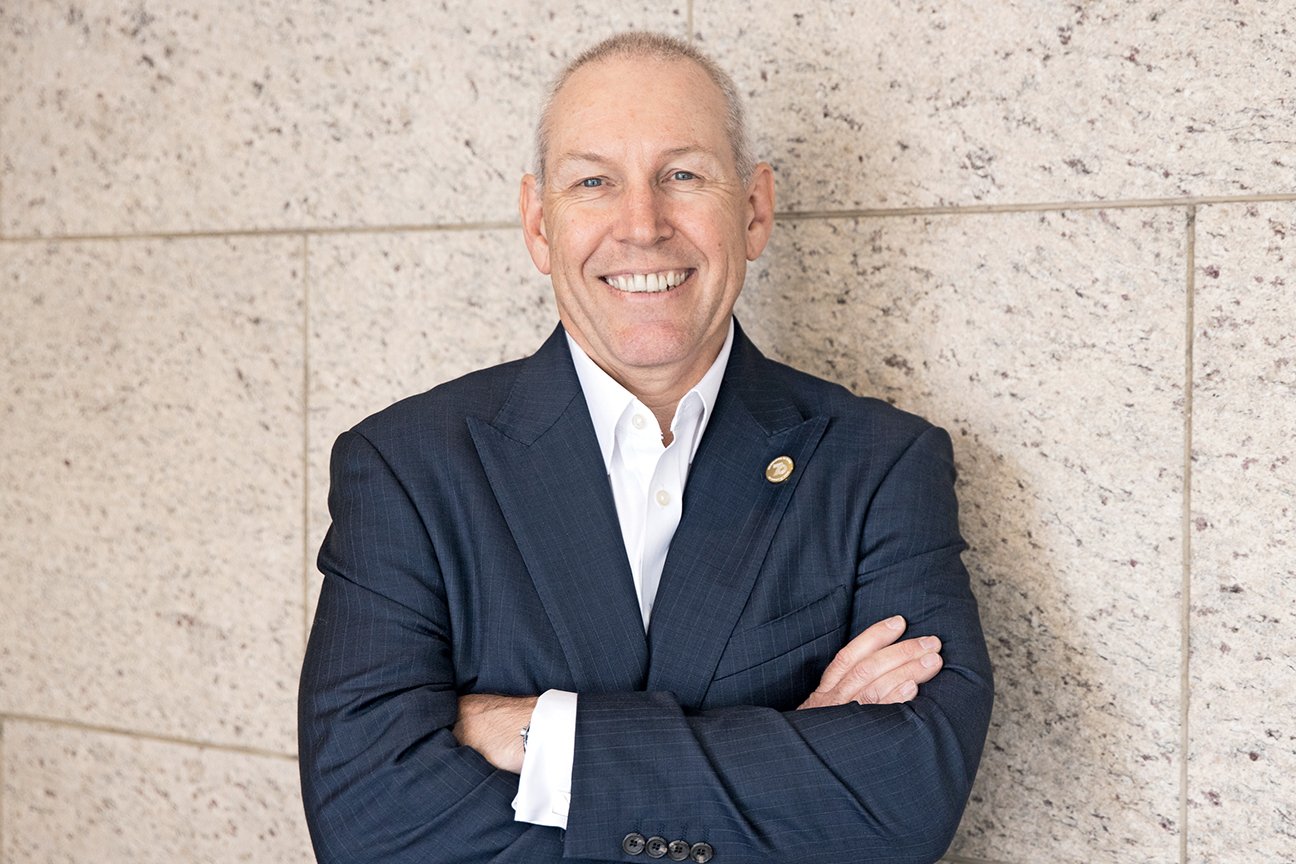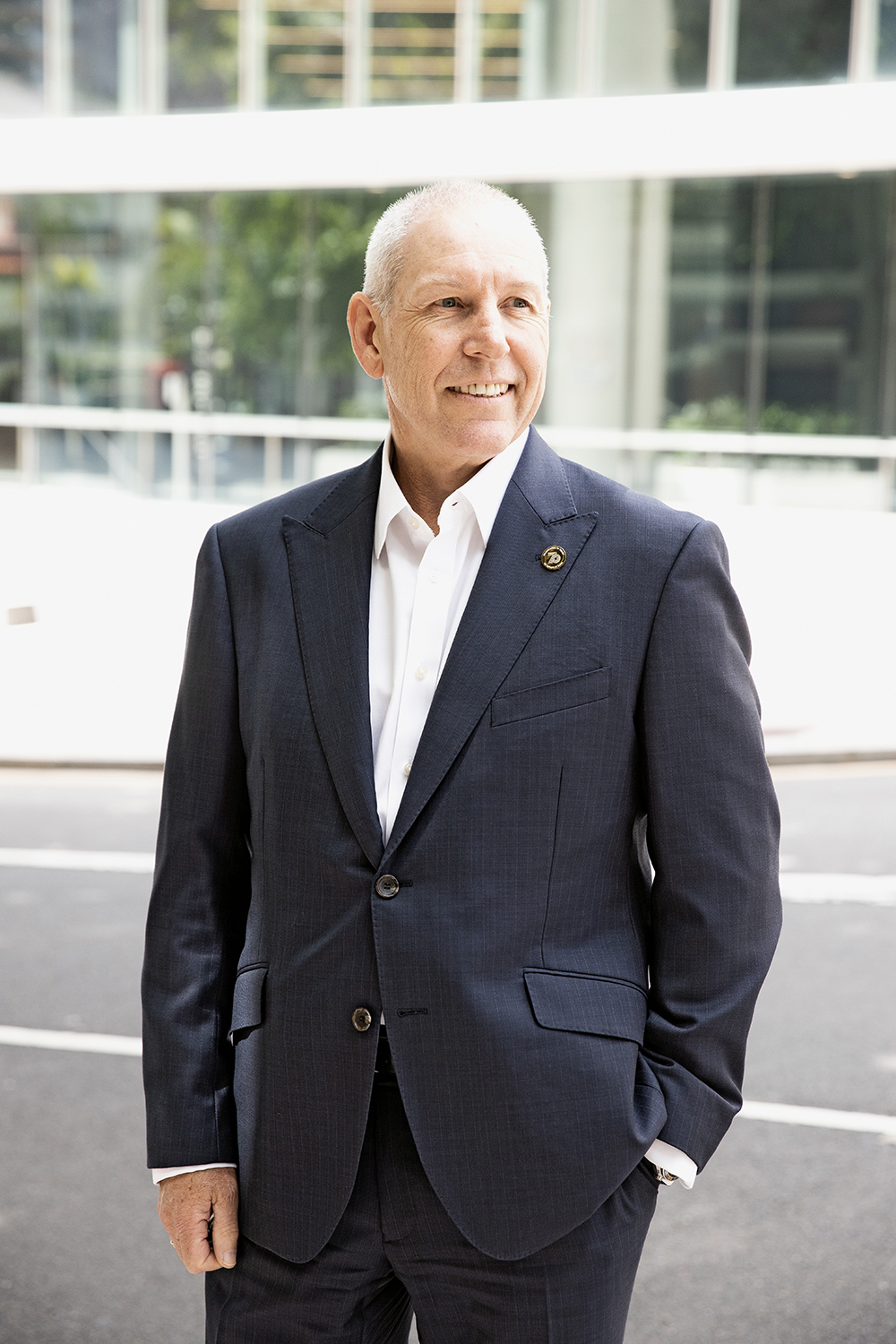Being part of an organisation that boasts an extraordinary portfolio reading like a who’s who of Australian landmarks, it’s no wonder the CEO at the helm of SMEC Australia and New Zealand happily admits he is “possibly” persistent and sometimes irritatingly detailed. “But I’ve become vastly more patient than I used to be,” James Phillis insists.

The design and engineering achievements of SMEC roll easily off the tongue as he rattles off a few of his favourites, built to impact and improve everyday lives.
There’s the NorthConnex tunnel, the longest and deepest to be built in Sydney; the Snowy 2.0, built to provide renewable energy for future generations; Hells Gates Dam, which will help improve water supply and manage floods; Adelaide’s desalination plant, delivering up to 100 billion litres of water every year; and the Yarranlea Solar farm about 50 kilometres west of Toowoomba that’s busily powering up to 32,000 homes.
SMEC has a history of delivering nation-building infrastructure, providing technical expertise and engineering services to resolve complex challenges for roads, rail, metro, airports, hydropower and renewable energy markets.
James has been with the company since 2014, joining as SMEC’s Regional Director (NSW/ACT). Three years later, he was appointed COO and, a year later, CEO.
With more than 30 years of experience in senior and executive roles leading businesses across a broad range of industries, he admits that it wasn’t until after he left the University of Sydney armed with an engineering degree and had worked for a couple of years as a chemical engineer that he realised he had other strengths apart from technical know-how.
“Some might say that not all engineers are people persons,” he laughs. “Engineers are very interesting and talented people, and many love getting into their technical work. Then there are others like me who go down the path of engineering, do all that technical work, only to realise you have an aptitude for something else. I was lucky to be given the opportunity, and had the desire, during my career to explore my potential beyond engineering design. In the same way, at SMEC, we recognise that both technical skills and people skills need to be developed and nurtured to effectively deliver.”
SMEC has more than 1,600 employees scattered across 18 offices in Australia and New Zealand. In 2019, the company celebrated its 70th birthday honouring the extraordinary milestones achieved since its inception as the Snowy Mountains Engineering Corporation.
The brief in 1949 was to build the Snowy Mountains Hydro-Electric Scheme, one of the world’s most complex integrated water and hydroelectric power schemes, which took 25 years to complete and was recognised by the National Museum of Australia as a Defining Moment in Australian History.
SMEC was also recognised last year by the Workplace Gender Equality Agency in Australia as an Employer of Choice for Gender Equality. “I am personally committed to ensuring a better gender-balanced workplace. We stand apart through our historically diverse, globally connected workforce, operating out of more than 40 countries with strong local relationships,” James says.

In 2020, another defining moment was created, uncharacteristically unplanned by SMEC’s designers and engineers, but ultimately evolving into one of the company’s biggest accomplishments.
“All our achievements and our substantial growth over the years enabled us to effectively manage our way through the COVID crisis, continuing to work on some of the most significant infrastructure projects in Australia,” James explains.
“Our revenue is down a little but, realistically, we are better off than many others, and we all worked very hard to keep everyone as busy as possible. “So it’s all about the recent past for me. We’ve got some really agile and resilient people. They’re pretty amazing to me, and we have an exciting future ahead of us as we partner with our parent and sister companies in the Surbana Jurong Group to help countries recover from the COVID-19 pandemic and continue to deliver infrastructure that will make a difference.”
Dealing with and overcoming the challenges thrown at SMEC last year reminds James of a former boss who often declared that as the CEO, he was the least powerful person in the organisation because he had to rely on everyone else to get things done.
“He was right,” he states. “You can’t command people to act against their will for too long; you can’t push them too far. You’ve got to work with them to make things happen.” James uses his engineering background as a valuable tool to keep on top of the numerous jobs SMEC is undertaking, and with a commitment to sustainability embedded in the company’s DNA.
“Our business is founded on sustainability, and we are committed to continuing to deliver sustainable solutions that help to connect, move and power people and communities,” he says.
“I am extremely proud of our involvement in Snowy 2.0; it’s the largest renewable energy venture in Australia, acting like a giant battery absorbing, storing and dispatching energy to supercharge the Snowy scheme for future generations.
Renewable energy is only as good as when the wind’s blowing or the sun’s shining, but if you can store that energy somewhere, then you’ve got the ability to have a much more sustainable energy future.
By 2040, Australia should be running on 85% renewable energy. If we see enough change in the technology, particularly in battery and storage, renewables can provide more of a baseline power supply.
“I would like to see more positive policy decisions that are based on incentives rather than disincentives. For instance, don’t impose a negative tax carbon; rather, put in place positive incentives to create growth in renewables and then let the market take care of itself.”
Meanwhile, SMEC is continuing to uphold its excellent reputation for innovation, snagging multiple awards last year including the 2020 ENR Global Best Rail Project award for Sydney Metro Northwest, Australia’s first driverless metro.
“Our teams work hard to deliver industry-best projects. We’re fortunate to have the opportunity to continue to support our clients on exceptional infrastructure projects during the global challenges posed by COVID-19.
“We do a lot of innovative things in our day-to-day work, challenging boundaries to deliver sustainable solutions,” James shares.
“I spend a lot of time encouraging our people to do things differently, capture those differences and then develop them into our design practices. What we do makes a real difference and creates an enormous footprint that will last for future generations.”


